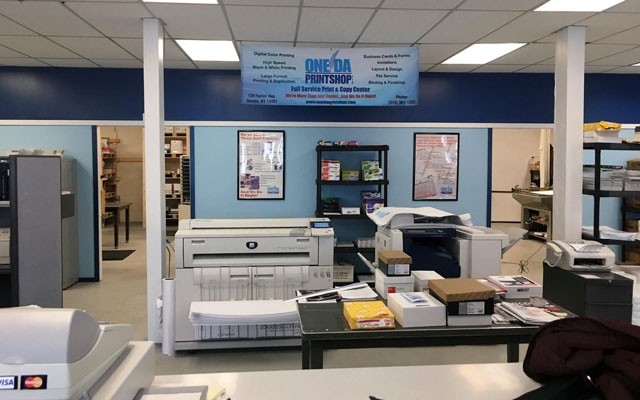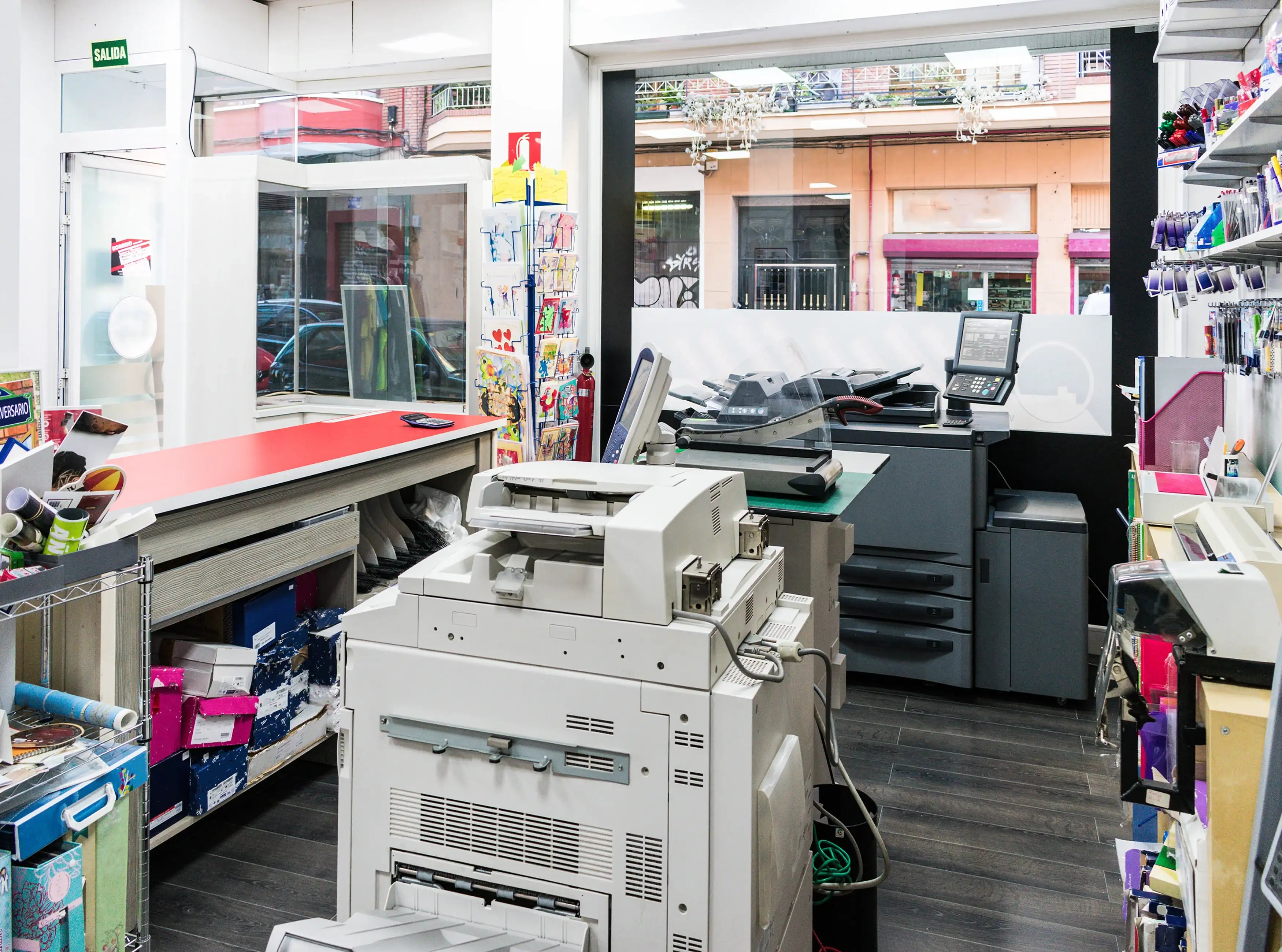5 Reasons to Switch From Online Services to a Print Shop Near Me
The Ultimate Guide to Using Printing Providers for Custom Art Prints
Steering via the globe of personalized art prints calls for a clear understanding of various printing services. Musicians must consider factors such as printing techniques and materials to achieve the wanted result. Each decision, from artwork prep work to color calibration, plays a necessary role in the last product. As they check out these components, artists can disclose the potential for their work to attach with target markets in a significant way. What steps can they take to guarantee their prints stand apart?
Understanding Various Sorts Of Printing Solutions
Although numerous individuals may forget the ins and outs of printing solutions, understanding the different kinds available is crucial for anybody looking to create custom art prints. The most typical kinds include digital printing, balance out printing, and screen printing. Digital printing is favored for its fast turn-around and capability to generate high-quality pictures directly from electronic data, making it suitable for little runs. On the other hand, countered printing deals superior image top quality and is affordable for larger amounts, utilizing plates to transfer ink onto paper. Screen printing, frequently made use of for textiles and marketing things, includes pushing ink through a mesh screen, enabling for dynamic colors and structures. Each method has its special benefits and limitations, making it important for musicians and designers to analyze their specific needs, such as amount, preferred top quality, and budget plan, before selecting a printing solution that lines up with their imaginative vision.
Choosing the Right Products for Your Prints
Picking the suitable materials is crucial for achieving high-grade customized art prints. Comprehending the various kinds of paper and the importance of ink quality can significantly affect the last result. Artists have to think about these elements to assure their vision is accurately stood for in the published piece.
Paper Types Explained
Picking the appropriate paper kind is crucial for accomplishing the preferred visual and toughness in customized art prints. Different alternatives exist, each offering distinctive characteristics. Glossy paper enhances color vibrancy and information, making it excellent for photography prints. On the other hand, matte paper supplies a softer finish, which is more effective for artwork that needs nuance and appearance. Great art paper, commonly made from cotton or alpha cellulose, supplies historical quality and is ideal for duplicating elaborate information in paints (Print Shop Near Me). Furthermore, specialty documents, such as watercolor or canvas, can add distinct visual results. Ultimately, selecting the appropriate paper type will greatly affect the final discussion, guaranteeing that the artwork is both visually enticing and durable
Ink Quality Matters
Ink quality plays a vital function in the general success of custom art prints. Premium inks guarantee vivid colors, sharp information, and durability, which are important for showcasing creative work. When selecting printing solutions, artists need to take into consideration pigment-based inks over dye-based options, as they supply better fade resistance and color security. Furthermore, the option of ink must complement the chosen paper type, boosting the print's aesthetic influence. Ecological aspects, such as moisture and temperature, can likewise impact ink performance; consequently, artists ought to ask about ink formulas that resist these aspects. Ultimately, buying superior ink quality can elevate the final item, guaranteeing that the art print holds to the artist's vision for many years to find.
Discovering Printing Techniques: Digital vs. Traditional
While both traditional and electronic printing methods have their one-of-a-kind benefits, the choice on which approach to make use of often rests on the particular demands of the artwork. Digital printing succeeds in convenience and rate, permitting fast turn-around times and the ability to publish as needed. This approach is particularly valuable for musicians that require small runs or one-of-a-kind items, as it removes the need for comprehensive setup processes.Conversely, traditional printing techniques, such as lithography and screen printing, usually create richer shades and textures, attracting musicians seeking a much more tactile and genuine finish. These techniques can improve the deepness and quality of the artwork, making them suitable for larger versions. In addition, typical techniques may use a distinctive visual that electronic printing in some cases battles to reproduce. Eventually, the selection in between these strategies ought to consider factors like wanted high quality, quantity, and imaginative intent, directing artists to the most suitable alternative for their jobs.

Preparing Your Artwork for Printing
Effectively preparing art work for printing calls for mindful attention to information, no matter the picked printing strategy. Artists should assure that their data are developed at the ideal resolution, generally 300 DPI, to maintain sharpness and clarity. The right shade mode, generally CMYK for print, is essential to attain the wanted color precision. Musicians need to likewise take into consideration the measurements of the art work, seeing to it to consist of hemorrhage locations if needed, to avoid any kind of unwanted white sides after trimming.Additionally, file layouts play a crucial duty; TIFF and PDF are often chosen for high-quality prints. Prior to entry, it is essential to assess the artwork for any type of blemishes or unwanted components. By thoroughly examining these elements, artists can enhance the probability of their prints aligning with their innovative vision, eventually bring about a successful printing result.
The Significance of Color Calibration and Proofing
Color calibration and proofing are essential actions in the printing process, as they guarantee that the last output precisely mirrors the artist's vision. Proper shade calibration warranties that the colors displayed on the display match those that will certainly be published. This process entails readjusting the screen settings, printer accounts, and inks to attain a regular shade representation.Additionally, proofing allows artists to preview their work prior to the last print run. This phase enables them to identify and fix any type of inconsistencies in saturation, shade, or information, therefore minimizing expensive errors. By using hard-copy or digital evidence, musicians can make enlightened decisions about modifications required for optimal results.Incorporating shade calibration and proofing right into the printing workflow not just boosts the quality of the end product however additionally cultivates a dependable partnership in between the printing and the artist service, guaranteeing satisfaction and fidelity to the initial artwork.
Choosing the Perfect Dimension and Format for Your Prints

Advertising and Marketing Your Personalized Art Prints
Advertising and marketing and offering custom art prints calls for a solid brand identity to stick out in an open market. Reliable on-line promo approaches and the strategic usage of social media sites platforms can greatly improve exposure and interaction. By integrating these aspects, artists can create an engaging presence that brings in possible purchasers.
Structure Your Brand Identity
Establishing a strong brand identity is necessary for artists aiming to successfully market and market their personalized art prints. This identification incorporates the artist's special design, worths, and story, which resonate with possible purchasers. Artists need to produce a natural visual visibility across all platforms, including logos, color design, and typography that show their imaginative vision. In addition, a clear goal declaration helps communicate the musician's objective and passion. Involving storytelling concerning the ideas behind each piece can foster emotional links with the audience. Consistency in messaging, whether on social media sites or packaging, enhances recognition and count on. By meticulously curating their brand name identification, musicians can differentiate themselves in an affordable market, drawing in dedicated consumers that value their creativity.
Reliable Online Promotion Techniques
What techniques can artists employ to effectively advertise their custom-made art prints online? Creating an expert web site showcasing the art work is necessary. This website must consist of premium photos and comprehensive descriptions to engage prospective customers. In addition, artists can utilize e-mail advertising by developing a subscriber listing to share updates, promos, and new releases. Collaborating with bloggers and influencers in the art community can broaden reach and reliability. Providing unique items or limited-time price cuts can also develop seriousness, motivating acquisitions. Enhancing web content for search engines through pertinent key words will certainly boost visibility. Keeping a blog regarding the artistic process can draw in art enthusiasts, cultivating a much deeper link with the target market and improving the general advertising and marketing technique.
Utilizing Social Media Platforms
Social network platforms offer as effective devices for musicians seeking to market and market their custom art prints. By leveraging platforms like Instagram, Facebook, and Pinterest, musicians can showcase their work to a substantial audience. Engaging visuals and calculated hashtags can increase exposure, drawing possible purchasers to their profiles. Consistently publishing content, such as new designs or behind-the-scenes procedures, assists keep audience passion and cultivates a feeling of area. Additionally, musicians can make use of targeted advertising to get to certain demographics, improving the chances of sales. Cooperations with influencers or various other artists can even more amplify exposure. Eventually, a well-curated i was reading this social media sites presence not just advertises custom art prints however additionally builds a faithful customer base gradually.
Regularly Asked Concerns

Exactly how Do I Locate Dependable Printing Expert?
To discover dependable printing solution carriers, one need to research online testimonials, seek recommendations from peers, compare profiles, request samples, and analyze customer support responsiveness. This thorough technique warranties informed decisions and satisfying end results.
What Is the Typical Turnaround Time for Customized Prints?
The normal turnaround time for customized prints differs by supplier, however usually ranges from a few look here days to two weeks. Elements influencing this include order size, complexity, and the details printing strategies made use of.
Can I Obtain a Reimbursement if I'm Not Pleased With My Prints?
The concern of getting a reimbursement for unsuitable prints commonly depends upon the certain printing solution's plans. Numerous firms offer fulfillment assurances, while others may have rigorous return problems, highlighting the relevance of assessing terms beforehand.
Are There Any Hidden Costs Connected With Printing Services?
Several printing solutions might consist of covert costs such as configuration charges, shipping charges, or added fees for details materials. It's necessary for customers to ask about all possible costs prior to settling their order.
Exactly How Can I Ensure My Prints Are Eco-friendly?
To guarantee prints are eco-friendly, one should select eco-friendly inks, recycled paper, and lasting printing practices. Researching printing solutions that focus on sustainability and acquiring qualifications can additionally ensure very little environmental effect in the printing procedure. Steering via the globe of custom-made art prints requires a clear understanding of numerous printing solutions. Several individuals may neglect the intricacies of printing services, understanding the numerous kinds available is essential for any person looking to produce custom-made art prints. The most usual types include digital printing, balance out printing, and screen printing. Efficiently preparing artwork for printing requires cautious attention to information, no matter of the selected printing method. Prints intended at galleries could need standard dimensions to assist in framework, whereas unique formats might appeal to enthusiasts looking for something distinctive.Lastly, the printing service's capabilities have to be reviewed.